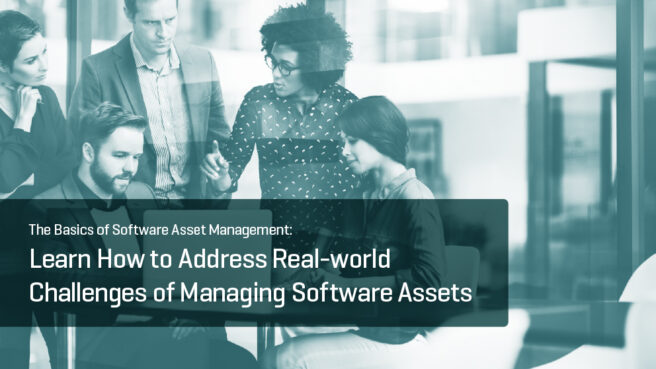The Basics of Software Asset Management

In recent years, Software Asset Management (SAM) has evolved to manage a wider range of business assets and processes, transforming beyond license compliance. Today’s SAM practices include strategic cost control, infrastructure management and security control, on top of the foundation of license optimization. Issues that figure heavily on the agendas of most CIOs. It’s their job to ensure that the organization is doing more with less, contain soaring IT costs, deliver user flexibility, and minimize risk exposure. A good SAM practice goes a long way toward helping organizations, and their CIOs, achieve these targets.
In this post, I provide some insight into the context in which SAM operates, the concepts that SAM is built on, and highlight some common issues. My hope is that I can provide a glimpse of the factors influencing SAM and help you assess if your SAM practice on the right track, Maybe, you are about to introduce SAM to your organization, if so, here’s some thoughts to get you going.
A CONSTANT State of flux
Fundamentally, Digital Transformation – the replacement of analog processes with digital ones that can be automated – is pushing the need for efficiently-managed IT services. Organizations are adopting a cloud-first approach for managing IT and improving the flexibility of the services offered to users. IT restrictions are loosening, increasing user freedom to consume applications anywhere, any time, on any device. The ever-widening Disruption Gap – business units procuring and deploying software bypassing the IT department completely – is putting pressure on the need for insight, as the responsibility remains with the CIO and IT to ensure compliance and IT governance.
License agreement complexity has risen as digital transformation deepens. Today, it is common for an agreement to cover multiple platforms, home and office use, and include additional access through cloud services. Different versions of ‘the same’ application can be licensed with widely differing metrics, and the terms and conditions for a given application can vary from one buying scenario to the next – depending on factors such as the number of licenses purchased, the duration of the agreement, and the size of up-front commitment. To make matters worse, vendors sometimes use the ‘same’ metric differently; concurrent use, for example, may not mean the same thing from one product to another, even from the same vendor.
With so much variation, It is difficult for buyers to know whether they are getting a good deal, understand how a license entitles use of a piece of software, let alone answer the question of whether or not an application is needed.
Containing CLOUD costs
Cloud computing has been a game changer for infrastructure and one of the primary technologies facilitating user flexibility. Cloud computing, for example, provides support for load-balancing and scalability to ensure a seamless experience for users even at peak operating times. In addition to providing flexibility, cloud computing avoids the need to procure hardware for max load scenarios.
The drawback of Infrastructure-as-a-Service (IaaS), lies in its flexibility. The dynamic capability to say move loads from one machine to another, or rapidly scale up computational power, complicates the ability to accurately determine the number of licenses needed – expensive enterprise software is often licensed based on the computational power of the hardware it is running on.
The auditors are not likely to come knocking on your door as soon as your servers start processing at max, but you will need to address the situation and keep your costs in check. And what about those zombie VMs running amok in public clouds eating up budget? Do you have access to granular usage data for all IaaS environments? Do you have an understanding for what is going on in your environment, so that you can deal with issues and prevent costs from spiraling, with no means of containment?
Compliance is no longer the issue when it comes to Software-as-a-Service (SaaS), because most subscriptions are controlled by the vendor, who won’t allow users access unless they are assigned with a valid license. SAM for SaaS is about optimization and usage, answering questions like: are my users using the software they’ve been assigned, and are they on the right plan? Reharvesting and reassigning unused subscriptions to maximize cost containment.
If you have the right SAM technology and processes, consumption can be monitored and repetitive tasks in the software lifecycle automated enabling IT to identify if the resources are being used by the appropriate users, get the necessary transparency on where costs are being distributed as well as ensure requests get the right approvals and reharvest or decommission a license.
Jesper Beck Lassen, Software Asset Manager at VELUX sums it up: “We want to ensure fair licensing, ensuring we only pay for what we use. Here at VELUX, SAM is much more than counting beans, it brings much more value to the table. Snow’s SAM platform has helped us to ensure transparency, eliminate software license sprawl and make smart decisions about balancing compliance against optimization.”
I hope I’ve provided some tracks for you to investigate further. Is your SAM practice covering all angles and not just the foundation of license compliance? Are you covered for SaaS and IaaS optimization? Is your SAM practice in line with your digital transformation? Are you introducing a SAM practice into your organization? Why not download our new eBook of Software Asset Management Basics.